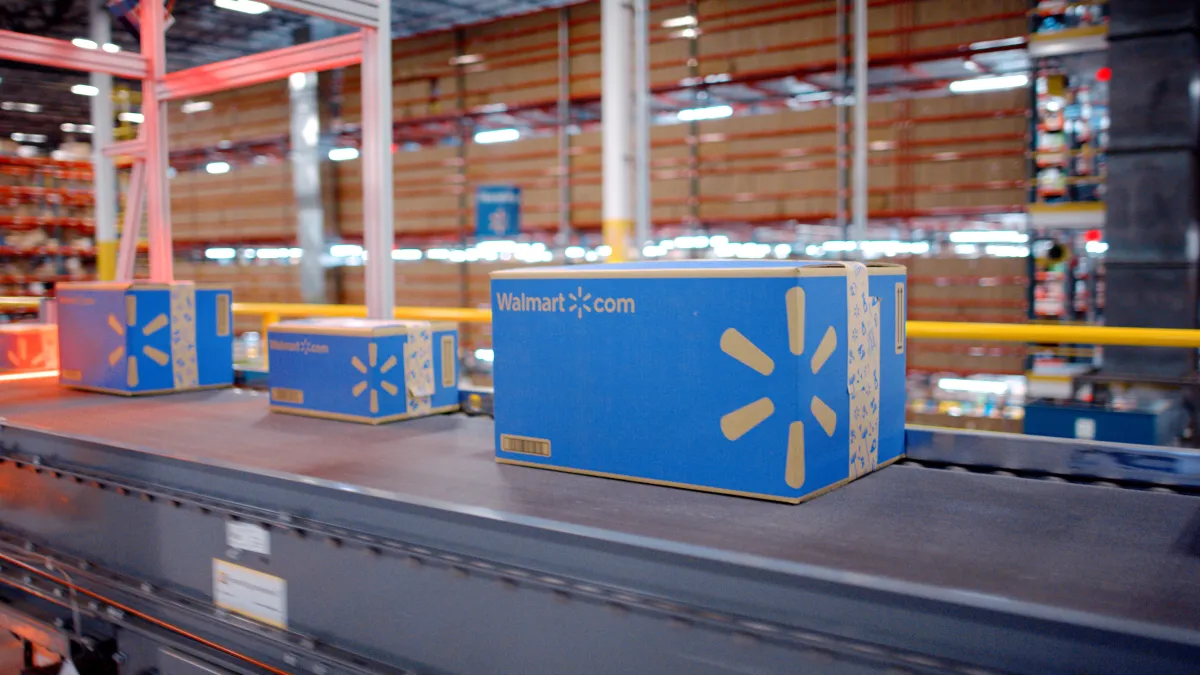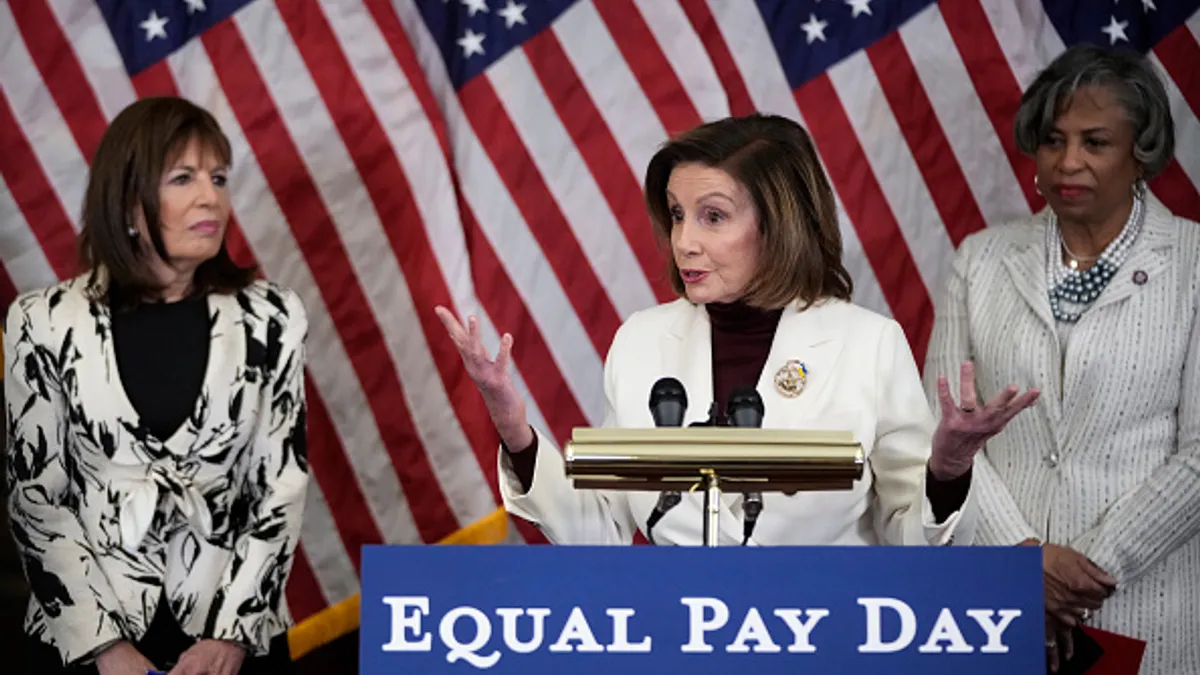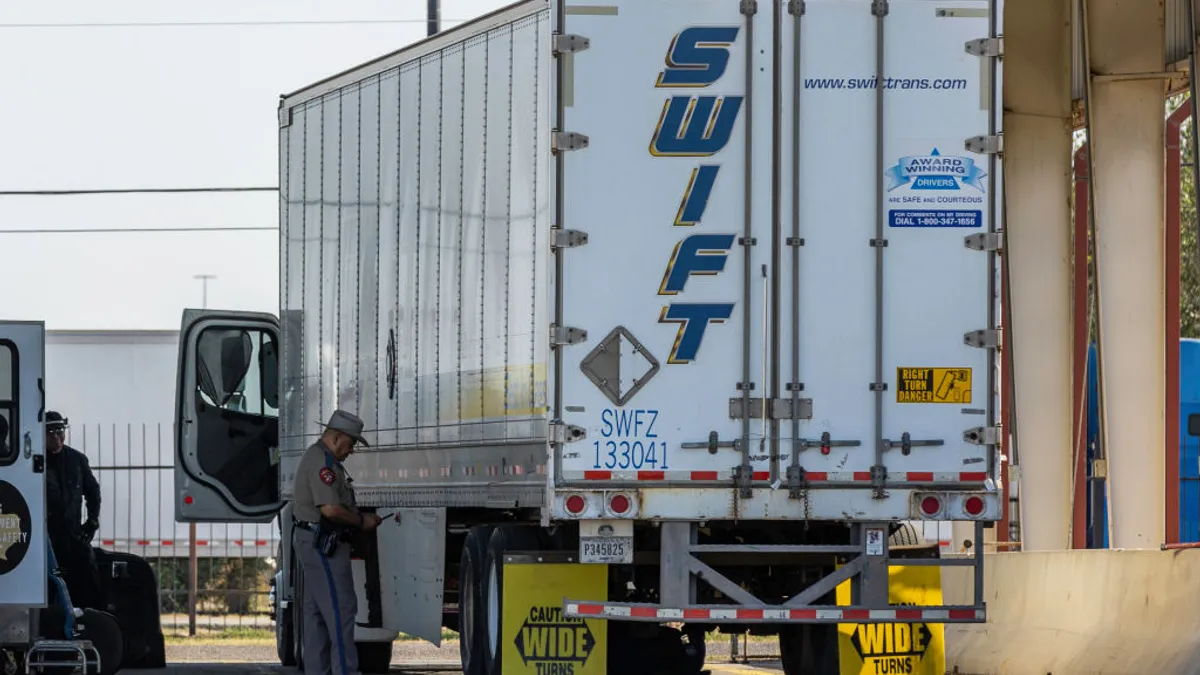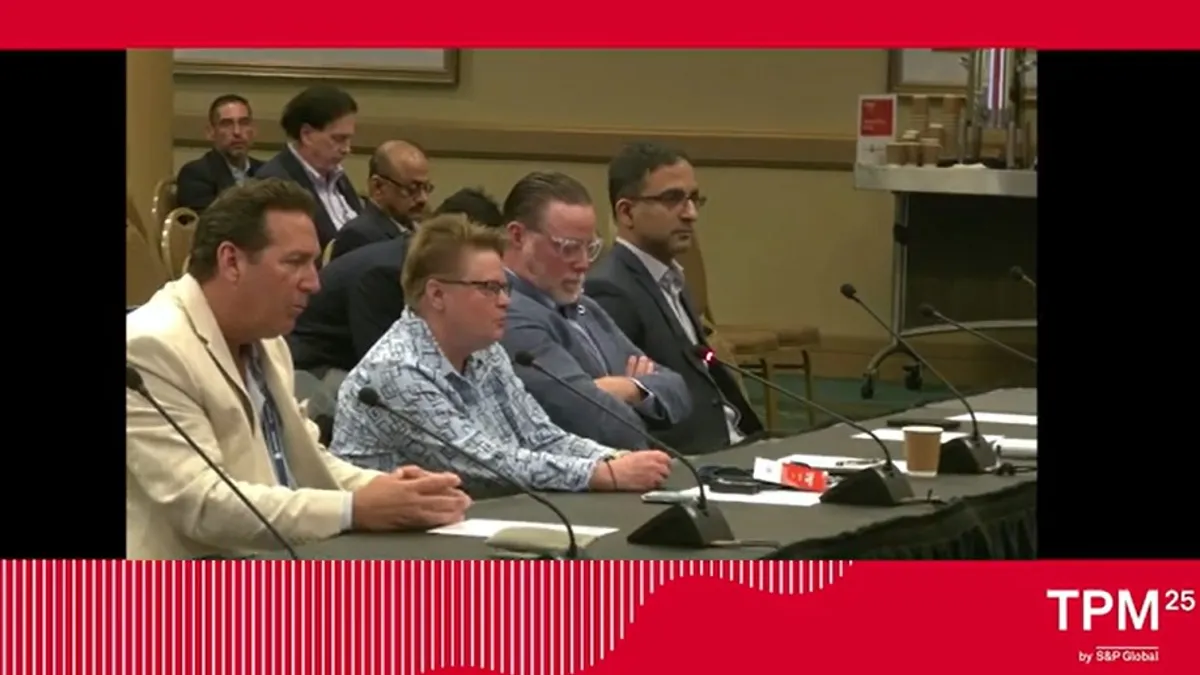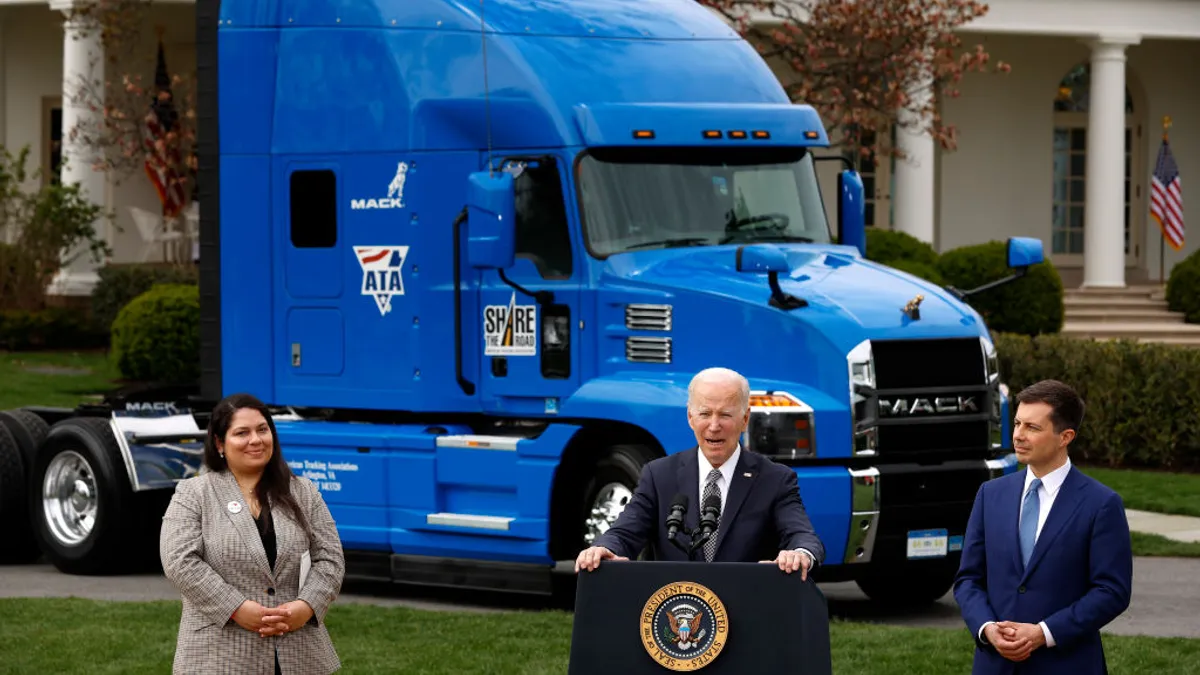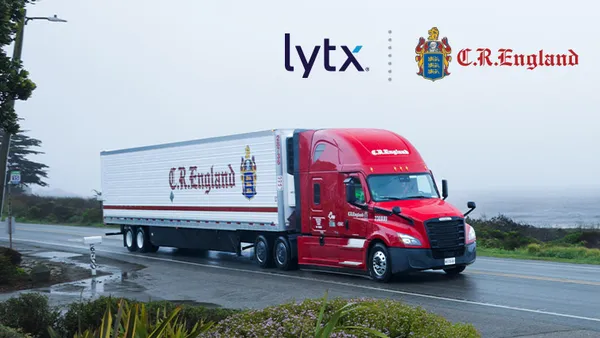E-commerce, already booming and driving freight faster through the supply chain, has gotten an exhausting stress test from the COVID-19 crisis. The illness spread so quickly, causing governments to close businesses and schools, that delivery options and time slots have dried up for many consumers.
Trucking in general has been, and will continue to be, challenged by the coronavirus crisis. With consumers concerned about personal space and contact, many fleets may have to find ways to assure customers that deliveries to their doors — and sometimes even inside their houses, with installations part of the packages — are safe.
Health concerns are piling up. The COVID-19 crisis has forced fleet and warehouse managers to structure workplaces in ways that keeps workers safe from possible coronavirus spread. That means more workplace cleanings, masks and personal protective equipment (PPE), and adjusting break times to keep workers apart, said John Q. Anderson, operating partner of Greenbriar Equity Group. This all has to be done while consumers cause surges in some product demand.
"It's a big shock to the industry," Anderson told Transport Dive. "The economics might get tougher."
Greenbriar Equity has stakes in LaserShip, a non-asset-based parcel delivery company; BDP International, a logistics company managing shipments of chemical, industrial and consumer items; and SEKO Logistics, a global supply chain company. Anderson said his companies use software to manage how workers pick parcels and get them to the next queue, trying to keep the workers at least six feet apart. Break times are also being spaced out to keep workers apart.
But the innovations could be temporary if vaccines or good treatments are found for COVID-19, he said. Anderson said most companies do not make major changes to their picking-and-sorting strategies during the influenza season, and he expects workplaces to adjust back to normal once effective medical treatments are found for COVID-19.
"One of the big long-term effects in last mile could be contact-less delivery becoming the norm, even after COVID-19."

Joseph Checkler
XPO Logistics spokesman
Other fleets believe some changes caused by COVID-19 could be here to stay.
"One of the big long-term effects in last mile could be contact-less delivery becoming the norm, even after COVID-19," said Joseph Checkler, XPO Logistics spokesman, in an email to Transport Dive. "It may take years before consumers are completely comfortable getting up close to a delivery driver to accept a delivery. For this reason, we’re exploring options to replace the 'sign-on glass' of the mobile phone of the driver with a system that involves text messages. For example, we send a text and they reply by text whether they accept the delivery."
As for accelerated use of last mile, Anderson said he is a bit skeptical the change will be large after the COVID-19 crisis fades. But if consumers are satisfied with the e-commerce process many have just discovered, it could cause consumers to use online ordering more, he said.
Convenience could lead to larger last mile
Anderson believes convenience is one of the changes needed within trucking's last-mile segment. Americans don't yet eye some big, bulky items and other consumer staples as easy to shop for or receive, he said. If that changes, sales of last-mile deliveries could increase.
Last-mile delivery companies also have to figure out how to inhibit porch thefts, using personal lockers on consumers' front yards, Anderson said. Ben Wiesen, president of Carrier Logistics, a transportation management software company serving LTL fleets and logistics firms, agreed.
"The reality of 'porch pirates' and deliveries which go missing pose a significant problem which can’t be solved through computing power alone," Wiesen told Transport Dive. "As more and more of what people consume gets delivered to their homes, often when no one is there, coming up with a solution to control shrinkage is on the minds of many fleet managers."
Last-mile fleets have been going in the direction of delivering more "big and bulky" items to consumers, a behavior likely curbed for now. J.B. Hunt bought a "big and bulky" service, RDI Last Mile Co., at the end of December as it sought to expand its final-mile services. RDI specializes in large-format, last-mile deliveries on the East Coast, executed through a network of contractors.
Wiesen said the pandemic could limit how far last-mile deliveries go. Many fleets, such as J.B. Hunt and FedEx Freight, are preparing to offer more installation services to enhance their deliveries of items such as dishwashers and furniture. Some consumers might decide to close their thresholds for the time being.
"People don't want someone coming into their house right now," Wiesen said.
"It is a crazy, fluid, wild situation right now ... My personal belief is we are going to see permanent changes in people's behavior."

Ben Wiesen
President, Carrier Logistics
Despite coronavirus concerns, larger last-mile business is being forged by wild times in a frazzled marketplace, with newer users coming online for the first time in April. Demand for essential goods is strong and persistent through e-commerce.
Peapod, a delivery service for Giant supermarkets, is often booked two weeks into the future. In late March, FedEx and UPS suspended their respective service guarantees, citing expected delays and disruptions related to the global coronavirus response. And on March 17, Amazon temporarily prioritized essential goods, delaying deliveries of goods deemed "non-essential" during the health crisis. It let up on the policy on April 13.
"It is a crazy, fluid, wild situation right now," said Wiesen. "Those are all words I have heard clients use ... My personal belief is we are going to see permanent changes in people's behavior."
COVID-19 causes new glitches on the maps
The biggest change for last mile has been volume. But lack of trucks has not been the problem, Wiesen said.
Instead, the illness — with its shutdowns, idlings and sick cases — has thrown a monkey wrench into the sophisticated route planning and optimization efforts of fleets and logistics companies, Wiesen said.
"When the company doesn't know how many drivers will be available, it becomes very hard to preplan efficient routes," said Wiesen. "When no one knows from day to day which customer locations are open, which are subject to new protocols related to social distancing — and which are going to refuse deliveries because they don’t have the shipping and receiving staff to accept orders — there is a lot of guesswork, which degrades the efficacy of carefully engineered route plans."
Another challenge for logistics firms has been assembling orders, Wiesen said. Normally, grocery stores have volunteers, known as shoppers, who pick their items and take them to checkout. Now grocers are scrambling to find enough workers to get the orders assembled and shipped to the homes of consumers.
"Somebody has to do the work," said Wiesen. "[Assembling orders] causes a disruption. That's where the bottleneck is."
Aggravating the situation is an army of new online shoppers, stuck at home and trying out online shopping for the first time. On Thursday, Reuters reported that DHL cut collections from retailers in Germany, swamped by parcel-delivery demand.
"There is a lot of guesswork, which degrades the efficacy of carefully engineered route plans."

Ben Wiesen
President, Carrier Logistics
The coronavirus could fade later in 2020, with the crisis leaving behind many consumers more prepared to use online shopping and last-mile delivery to stock up.
"Many consumers who normally would not have ordered groceries online prior to COVID-19 will likely continue to order some, if not most, of their groceries online after trying it while under state-imposed, stay-at-home orders," Cathy Roberson, president of research firm Logistics TI, told Transport Dive in an email. "E-commerce as a percentage of total grocery sales will grow beyond the current estimated 6% ... In general, e-commerce will continue to grow as a percentage of total retail sales."
Roberson said truck companies will need to ensure they have the right route-optimization technology to meet tight delivery windows from consumers, retailers and manufacturers.
But the crisis ending could also make many cooped-up Americans eager to get out and shop in person. Anderson said the effect on e-commerce growth won't be dramatic, and it's too early to say last mile has won the war over in-person retail. For now, fleets will have to juggle both segments of retail and last mile.
"We're a long way from brick-and-mortar being dead," said Anderson.


